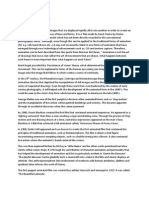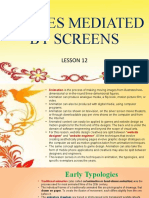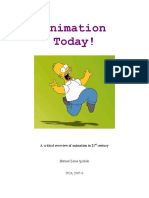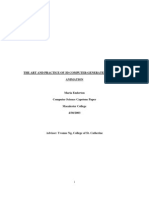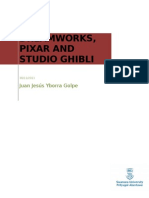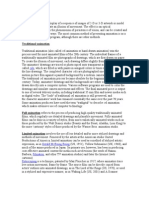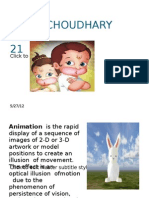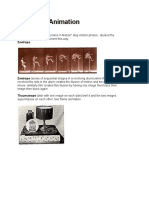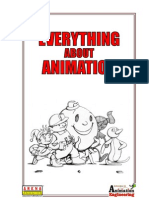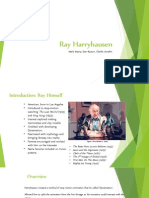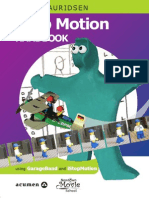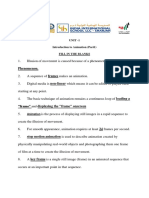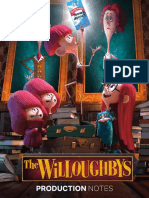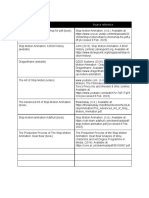0% found this document useful (0 votes)
121 views14 pagesAnimation Types and Uses Explained
Animation is a dynamic medium that gives the illusion of movement by manipulating images or objects frame by frame. There are various forms including traditional hand-drawn animation, 2D and 3D computer animation, and stop motion animation using objects like puppets. Animation is used widely in entertainment like films and television, as well as advertising and education to convey information in memorable ways. The animation industry employs people in roles across the production process from directing and writing to designing characters, animating, and post-production work.
Uploaded by
georgeCopyright
© © All Rights Reserved
We take content rights seriously. If you suspect this is your content, claim it here.
Available Formats
Download as DOCX, PDF, TXT or read online on Scribd
0% found this document useful (0 votes)
121 views14 pagesAnimation Types and Uses Explained
Animation is a dynamic medium that gives the illusion of movement by manipulating images or objects frame by frame. There are various forms including traditional hand-drawn animation, 2D and 3D computer animation, and stop motion animation using objects like puppets. Animation is used widely in entertainment like films and television, as well as advertising and education to convey information in memorable ways. The animation industry employs people in roles across the production process from directing and writing to designing characters, animating, and post-production work.
Uploaded by
georgeCopyright
© © All Rights Reserved
We take content rights seriously. If you suspect this is your content, claim it here.
Available Formats
Download as DOCX, PDF, TXT or read online on Scribd
/ 14



